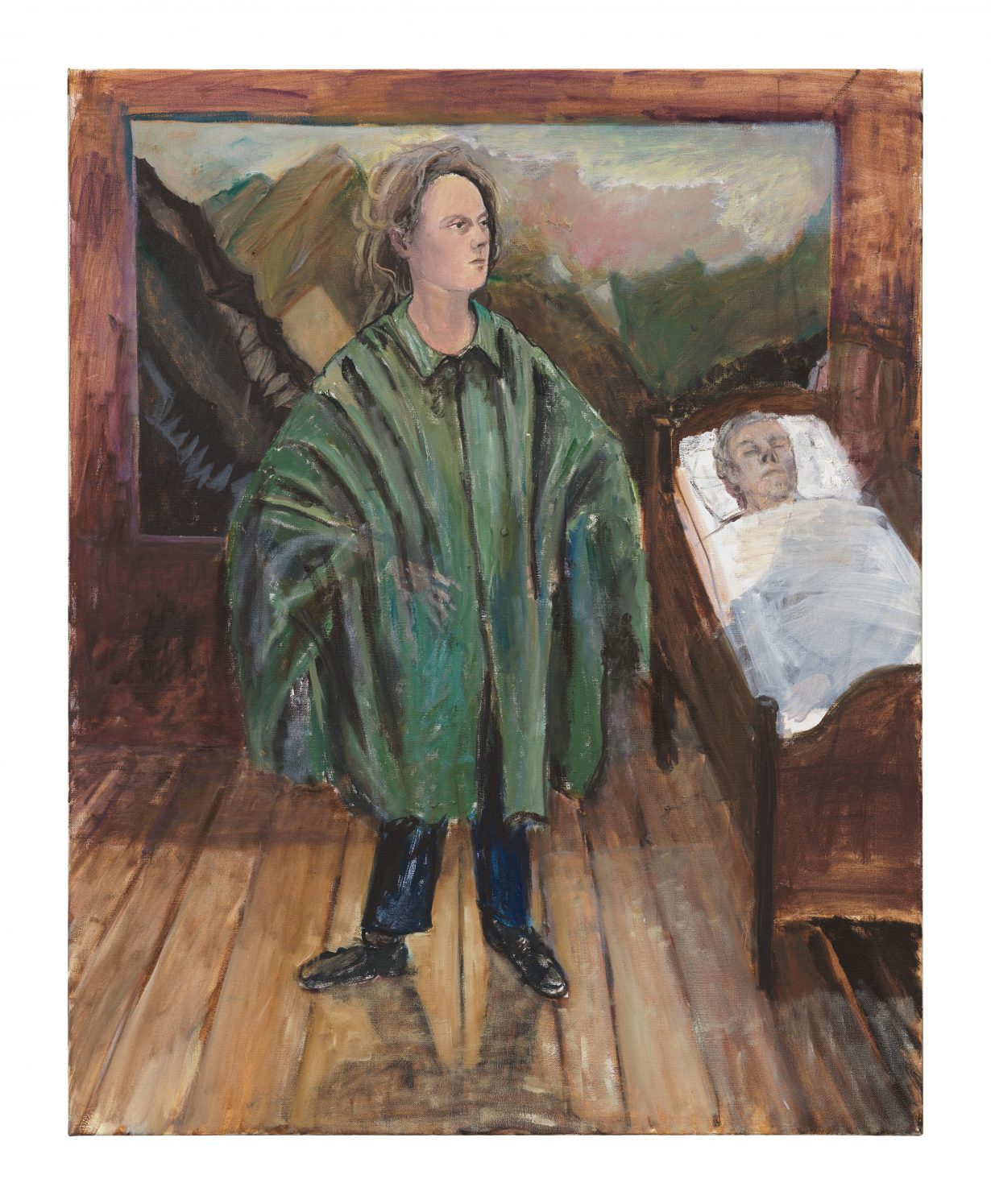Artworks on view at Berlin’s KW Institute resonate with a wistfulness for ‘normality’ that is countered by an intensified paranoia about social spaces

Amelie von Wulffen’s first institutional solo show in Berlin should have opened last December, but at the time of writing, it remained behind closed doors due to the pandemic. Having wangled a private appointment, I feel perversely self-conscious in the silent space, recognising that as miserable as the situation is, there’s an accidental consonance in the fact that one of Germany’s most self-confronting artists – meaning the nation’s self as much as her own – one who forefronts the bathos and paranoia of these selves as they meet in her work, has been kept in this tomblike state.
Born two decades after the end of the Second World War, von Wulffen grew up keenly aware of ‘the silence’, a manifestation of the trauma, guilt and erasure that followed the fall of the Third Reich. As attested to by recent scandals such as the systematic failure to link far-right terrorism, namely the National Socialist Underground, to a decade-long series of racist murders, this condition is by no means ‘historical’, and von Wulffen wrestles with it in a relentless and queasy manner. The exhibition’s design is sensitive to the intensity of von Wulffen’s territory, while seemingly mindful of how works resonate with the emotions and political implications of the past year.

It begins in an antechamber dedicated to Die graue Partizipation (2001), graphite drawings made from the artist’s own snapshots of clubs and concerts. The scenes are experienced at eye level, communicating the bustle and intimacy of moments in which she’d been present, yet their silvery, apparitional quality is disquieting, conversely suggesting that it is the artist/ observer who is the ghost, passing through real life. Today, they resonate with a wistfulness for ‘normality’ that is countered by an intensified paranoia about social spaces, asking, ‘Do you really want to return to normal?’
With approximately 250 works from the mid-1990s to 2020 on show, comics, collages and claymation follow, including watercolours of anthropomorphised fruits, tools and other improbable receptacles for banal yet often cruel human exchanges. Von Wulffen’s preoccupation with repression, violence and sickly nostalgia culminates more explicitly in the ‘grand hall’, where the limitless scope of human projection is also expressed, not least – with a wry nod to Capitalist Realism – in the recurring motif of an ice-cream menu, which in no subtle way suggests an index of desire through which children are essentially taught to ‘suck dick’ (in one painting, a gnomelike figure flashes its huge phallus between the Cornettos and Magnums).

Von Wulffen’s paintings gobble up and spit out ‘völkisch’ Romanticism, the enduring picturesque of Mitteleuropa and her own teenage iconography, with the movements or motifs of few German ‘masters’ escaping her scope or equivalating touch. An untitled painting from 2016, its surface daubed with a treacly fake-aging effect, depicts a flaming infant staggering through ruins towards bottles of alcohol. It manages simultaneously to harness the satirical grotesquery of Otto Dix and to send it up. The ‘shit’-smeared walls of the central installation allude to von Wulffen’s personal (and typically female) role of caring for sick parents, yet manage to lampoon the spiritual gesturalism of Anselm Kiefer. This space, structurally defined by fabricated walls that loosely contain it, shows works made within this last, most peculiar year. They largely address her elderly parents’ decline, but pertinently summon familial, ecological and cultural crises in unison. The floor hosts a number of wooden boxes, painted with seascapes, planets or Bavarian timber interiors. (In the latter, an old man festers in a cot.) The crates accommodate an array of figurines fashioned from seashells (unabashedly sourced from eBay) and other ‘found’ rustic elements. Hippieish makeshift stalls in which everything can be repacked and moved out again, obviously suggesting the casket and the commodity, they also recall the creepy tableaux occasionally glimpsed in windows of old Berlin apartments and bars: dusty trinkets on a paltry stage, still somehow invested with a bereft kind of communicative possibility.

Windows feature plentifully in von Wulffen’s work, often out of reach or as escape hatches, in tension with her formal insistence on the surface, where the viewer often feels emotionally detained, implicit in ‘the grand facade’. One painting shows her framed by a landscape in full painter’s smock, laughably confident, the image of the ‘dead dad’ behind her. It seems to dare you to care. Contemplating this exhibition, I’m reminded of the Austrian poet Friederike Mayröcker. In ‘Nausea’ (1990): ‘a girl crosses herself / before the menu-board leaning against the inn’s door/ to louse / this dirty figure of my soul […] the dog with the snake’s gaze / mirror up the stairs in a dream’. Mayröcker said, ‘I live in pictures […] I transform pictures into language by climbing into the picture. I walk into it until it becomes language.’ These recent works of von Wulffen’s, where reckoning with a parent’s death and its significance to broader lineages play out, make one curious as to how she in turn will climb further into her pictures, and thus her own language.
Amelie von Wulffen at KW Institute for Contemporary Art, Berlin, is on view until 24 May